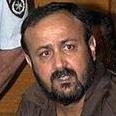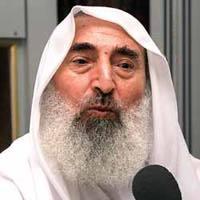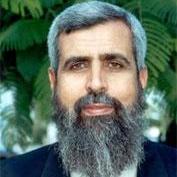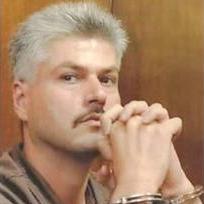











If only they hadn’t been released …
Almagor Study: 80% of Released Terrorists Returned to Terrorist Activity
Against the backdrop of the trend to release terrorists “without blood on their hands” (i.e. who failed in their first attempts at murder) in exchange for ostensible political gains, Almagor performed a study showing that at least thirty recent terrorist attacks were performed by terrorists who had been released in deals and “gestures.” Since 2000, these released terrorists have murdered over 180 Israeli civilians, while crippling or wounding many others.
The vast majority of terrorists released in any given case returned to terrorism.
During the years 1993–1999, a total of 6,912 terrorists were prematurely released from prison. In just the initial study, Almagor learned of 854 of these released terrorists who were again arrested for involvement in murderous activity. However, the real numbers are much greater than publicly accessible sources would seem to indicate. According to an estimate by former attorney general Elyakim Rubinstein, 80% of freed terrorists return to terrorism in one way or another, whether commanding, instructing, or killing directly.
Below are biographical sketches of some of these terrorists, including their murderous activities after being released:
Marwan Barghouti: expelled to Jordan, returned to Israel in 1994 under Oslo Accords
Barghouti was apprehended by Israel in 1976 for terrorist activity. After his release he became a leader of the first “intifada” in 1987, leading masses of Palestinians in protests against Israeli rule in the territories. He was apprehended by Israel during the rioting and expelled to Jordan, where he stayed until he was permitted to return in 1994 under the Oslo Accord. In 1996 Barghouti was elected to the Palestinian Legislative Council. He also served as secretary general of Fatah in Judea and Samaria.
With the beginning of the second “intifada” in 2000, Barghouti assumed leadership of the Tanzim, which he built into a terrorist organization that executed many attacks on Israelis, including suicide bombings and gunfire on Israeli vehicles by ambushing terrorists, which were carried out under the name of the Aqsa Martyrs Brigades.
In 2001 Barghouti survived a targeted assassination attempt by Israel. He was apprehended by IDF forces on 15 April 2002, during Operation Defensive Shield.
On 20 May 2004, Barghouti was convicted of five counts of murder and a count of attempted murder, while a plea deal excused him of 21 additional counts of murder and 33 other charges. Barghouti was sentenced to five concurrent life sentences for the five murders of which he was convicted, and another 40 years’ imprisonment for the attempted murder.

Sheikh Ahmed Yassin: released in 1985 Jibril Deal, released again in 1997 agreement with Jordan
Guns were found in Yassin’s home in 1983. and he was sentenced to 13 years’ imprisonment for possessing weapons, founding a military organization, and calling for the destruction of the State of Israel.
He was released from prison about a year later, as part of the 1985 Jibril Deal.
In 1987 Yassin founded the Hamas terrorist organization, which he headed until his death.
In 1989 Yassin gave an order to kill Palestinians suspected of collaborating with the IDF and the ISA. Later he supervised the abduction and murder of two Israeli soldiers. He was brought to trial in Israel for these crimes and sentenced to life in prison.
Yassin was released from prison again in 1997 under an agreement between Israel and Jordan, following the failed attempt by the Mossad to assassinate Khaled Mashal in Amman.
Following his release, the sheikh returned to preaching violence and terrorism against Israeli civilians, leading the most extreme camp within the Palestinian Authority while enjoying a measure of immunity due to his status among his followers. According to reports by the IDF and ISA, he participated in planning terrorist attacks on the operational level.
On 22 March 2004, an Israel Air Force helicopter eliminated Yassin in a missile attack.

Salah Shehadeh: released from prison in 2000
Shehadeh headed the military wing of Hamas in the Gaza Strip. He planned many terrorist attacks and was therefore designated a “ticking bomb” by Israeli security forces.
On 9 January 2002, he supervised the infiltration of “Africa” (an IDF post adjacent to Kerem Shalom) in which four IDF soldiers were murdered.
Two months later, on 7 March 2002, he dispatched a terrorist who shot to death five young men who were attending the pre-military academy in Atzmona: Ariel Zana, Baruch Marcus, Eran Picar, Aharon “Arik” Krogliak, and Tal Kurtzweil.
Shehadeh was eliminated by the IDF from the air on 22 July 2002.

Abdullah al-Qader Qawasmeh: released twice from Israeli prison
Qawasmeh was designated by Israel as the most wanted criminal in Judea and Samaria. He was the head of Hamas in Hevron, and was responsible for the murder of 25 civilians and the maiming of another 145.
Qawasmeh was first apprehended by security forces in 1988. In 1992, following the murder of policeman Nissim Toledano, Qawasmeh was expelled to southern Lebanon along with over 400 other Hamas and Islamic Jihad terrorists. Following his return at the end of the period of expulsion, Qawasmeh was again imprisoned for membership in Hamas and involvement in terrorism. He was again released in 1994, and returned to Hevron.
At the beginning of 1998, Qawasmeh was arrested by the Preventive Security Force headed by Jibril Rajoub and charged with providing shelter to fugitives belonging to the military wing of Hamas. He was moved to Rajoub’s interrogation facility in Jericho and stayed there for five months, after which he was transferred to the Jericho prison. Following a hunger strike, he was returned to prison in Hevron and then put under house arrest.
With the outbreak of the second “intifada,” Qawasmeh renewed his military activity in Hamas. He was responsible for many terrorist attacks, including the infiltration of Adora (27 April 2002, four murdered); the infiltration of Karmei Tzur (8 June 2002, three murdered, five injured); concurrent suicide bombings in Jerusalem, on bus 6 and at a-Ram Checkpoint (18 May 2003, six murdered, 20 injured); and a suicide attack on bus 14 in Jerusalem (11 June 2003, 17 murdered, 105 injured).
Qawasmeh was eliminated by the IDF on 21 June 2003 during an attempt to apprehend him.

Karim Rateb Yunis Awis: released in “gesture” to the Palestinians
In 1991 Awis was convicted of purposely causing the death of a Palestinian collaborator. He was convicted to life imprisonment.
He was subsequently released in a gesture to the Palestinians.
On 27 November 2001, Awis dispatched two terrorists who shot at civilians at the Afula Central Bus Station, killing Michal Mor and Noam Guzovsky and injuring 84 others.
On 21 March 2002, he dispatched a suicide bomber to King George Street in Jerusalem, where she blew up, murdering three Israelis (Yitzchak Cohen and Gadi and Tzipora Shemesh) and injuring 81.
From his verdict (Beit El Criminal Court 3478/02):
As is evident from the evidence provided to us by the prosecution, the accused already was convicted in the past, in 1991, of purposely causing the death of a resident of the camp in which the accused lives who was suspected by the accused and his associates of collaborating with Israel. The accused and his associates murdered this person by stabbing him with a knife and with an ax that the accused landed on his head. For this murder, the accused was sentenced to life imprisonment, but he was released under the peace deal with the Palestinians. The crimes for which the accused is being held accountable today prove that the gesture involving him (his early release) was not justified and that it led to the killing of additional innocent civilians. The danger posed by the accused was already obvious when he was convicted of murder in the past. The necessity of distancing him from human society forever was similarly self-evident. Following his release, the accused proved that this gesture was unjustified, and its high price has been exacted from many Israeli families.

Nasser Abu Hamid: apprehended several times, spent total of 13 years in prison
Hamid was convicted in 1990 of the murder of five collaborators and sentenced to life imprisonment. He was released under the Oslo Accords.
On 12 October 2000 he was photographed while taking part in the desecration of the bodies of IDF Corporal Vadim Nurzhitz and Yossi Avrahami during the Ramallah Lynch.
On 21 December 2000 Hamid murdered Eli “Eliko” Cohen in a shooting attack in the vicinity of Giv’at Ze’ev.
On 31 December 2000 he murdered Rabbi Binyamin and Talya Kahane in a shooting attack in the vicinity of Ofra.
He planned the 25 February 2002 attack on Neveh Ya’acov in which policewoman Galit Arbiv was murdered and ten civilians were injured.
On 27 February 2002 Hamid directed the murder of Gadi Rejwan in the Atarot industrial zone in Jerusalem.
He was responsible for the 5 March 2002 bombing attack on Sea Food Market, murdering three Israelis—Eliyahu Dahan, Yossi Habi, and policeman Salim Barakat—and injuring 31.
In December 2002, Hamid confessed in Jerusalem District Court to killing seven Israelis and was sentenced to three life sentences and fifty additional years’ imprisonment. He also was convicted of 12 counts of attempted murder and other charges. The representative of the State of Israel at the trial dubbed Hamid a “killing machine” and stated that Hamid had been the one who announced the founding of the Aqsa Martyrs Brigades terrorist organization.

Abbas Mahmad Mustafa Elsaid: released from prison in 1996
Elsaid directed the organized unrest in Tulkarem in the early 1990’s and was imprisoned for this activity in 1993. He was released in 1996.
Following the outbreak of violence in September 2000, Elsaid openly engaged in political public relations as the representative of Hamas in Tulkarem, while concurrently functioning as the head of the armed wing of Hamas there.
IDF forces captured Elsaid in May 2002 after it was learned that he was planning another terrorist attack, to involve the explosion of a explosive belt provided to him containing cyanide. His trial began in September 2003.
In September 2005, he was convicted of responsibility for the murder of 30 people and the injury of 144 in the Seder night (27 March) 2002 attack on the Netanya Park Hotel and the 18 May 2001 attack on the Sharon Mall in Netanya in, which five people were murdered—Miriam Wachsman, Yulia Tretyakov, David “Moti” Yarkoni, Vladislav Sorokin, and Tirtza (Tishbi) Polonski—and 86 were injured. Elsaid also was responsible for the suicide bombing of Herzl Street in Netanya on 4 March 2001, in which three people (Naftali Dean, Shlomit Ziv, and Yevgenya Malchin) were murdered and 56 were injured.

Ramaz Sali abu Salim: released on 20 February 2003
On 9 September 2003, only seven months after his 20 February release from prison, abu Salim committed a suicide bombing at Cafe Hillel on Emek Refa’im Street in Jerusalem, murdering David Shimon Avizdris, Dr. David Appelbaum, Nava Appelbaum, Yechiel (Emil) Tubol, Shafik Kerem, Alon Mizrachi, and Gila Moshe, and injuring many others.

Masaab Hashlimun: released from prison in 2004 and 2011
Hashlimun was sentenced to 15 months’ imprisonment for membership in the Islamic Bloc organization.
He was released in the Tenenbaum Deal on 29 January 2004.
Following his release he worked with another released terrorist, Mahmoud Qawasmeh, to set up a Hamas cell in northern Hevron. The members of the cell underwent firearms training and committed a shooting attack on 23 August 2004 on the Transjudean Road, in the vicinity of Telem, lightly injuring a child.
In August 2004, Hashlimun recruited terrorists Nasim Jabari and Ahmed Qawasmeh for a suicide attack. On 30 August, he received explosive belts and munitions for the purpose of photographing the suicide terrorists prior to dispatching them. The next morning he met with them and gave them the explosive belts and munitions. They took a ride with other Arabs who lacked permission to enter Israel and traveled to Be’er Sheva. At about 14:30, they blew themselves up aboard two buses in Be’er Sheva, murdering 16 civilians and injuring over 100.
Hashlimun concurrently recruited Ahmed Gazawi, an Arab resident of the Abu Tor section of Jerusalem, to commit a suicide attack in Jerusalem. He instructed Gazawi to obtain chemicals in Jerusalem and transfer them to Hamas operatives in Hevron, where they were to use them to prepare an explosive belt for him to use.
Hashlimun was apprehended along with the other members of his cell following the Be’er Sheva attack.
He was again released from prison on 18 October 2011, in the first stage of the Schalit Deal.

Fuad Qawasmeh: released from prison in December 2002
On 17 May 2003, one-half-year after his December 2002 release from prison, Fuad Qawasmeh exploded himself nearby Gross Square in Hevron, murdering Kiryat Arba residents Gadi and Dina (Muriel) Levy.

Jihad Alamrin (abu Kifah): released in May 1985 in Jibril Deal, expelled to Jordan
Alamrin set up and led the the Aqsa Martyrs Brigades in Gaza.
Among other terrorist attacks, he planned two IED attacks on two Israeli tanks adjacent to the community of Netzarim in Gaza, which murdered six IDF soldiers: Staff Sergeant Asher Zaguri, Staff Sergeant Moshe Peled, Staff Sergeant Ron Lavi, and Staff Sergeant Matan Biderman.

Eid Sawalha: released from prison in 1998 under the prisoner release component of the Wye Accord
Sawalha was responsible for the bombing of a bus at Megiddo Junction on 5 June 2002, which murdered 17 (among them Zion Agmon, Adi Dahan, Elico Timsit, and Shimon Lorent) and injured 42.
Only four months later, on 21 October 2002, Sawalha supervised the explosion of a jeep bomb alongside an Egged bus at Karkur Junction. 14 people were murdered—among them Asnai Abramov, Indelou Ashati, Ofra Burger, Suad Jaber, Iris Lavi, Anat Shimshon, and Sergey Shavchuk—and 42 were injured.

Halil Hamza abu Rob: last released in 1996
Abu Rob was behind the 18 September 2002 suicide attack on Um al-Fahm Junction, in which policeman Yossi Ajami was murdered and a civilian was severely wounded.
Abu Rob was eliminated by IDF forces on 26 December 2002 after he opened fire on the forces with intent to kill.

Mahmoud Hamdan: released from prison after serving 14 months
On the first night of Rosh Hashanah (26 September) 2003, two months after his release, Hamdan infiltrated Negohot as Israelis were having their holiday supper and murdered Eyal Yeberbaum and seven-month-old Shaked Avraham.

Nidal Salama: released toward end of 1999 under agreements with the PA
After his release from prison, Salama assumed a senior position in the military wing of the PFLP with responsibility for the southern Gaza Strip. Over the course of two years he was directly involved in shooting attacks, setting bombs, mortar fire, anti-tank missile fire, and short-range missile fire at Sderot, as well as in dispatching terrorists to attacks in which they committed mass murder in the Israeli communities of Gush Katif.
Salama was killed during an IDF operation in Gaza on 29 April 2003.

Bashar Hussein Fares Shuahana: released from prison in March 2003
On 19 August 2003, about five months after being released, Shuahana was captured by IDF forces operating adjacent to Arraba (southwest of Jenin) as he was dispatching a suicide bomber to commit an attack on Haifa. The terrorist also was captured and the attack was averted.

Louei Raad Barghouti: released in August 2003 in a gesture to Mahmoud Abbas
Barghouti planned and supervised attacks on Tzrifin, in which eight soldiers were murdered, and Cafe Hillel on Emek Refaim Street in Jerusalem, in which seven Israelis were murdered.

Ihab Abd al-Qadir abu Salim: released in 2003
Abu Salim was placed in administrative detention for three months for membership in Hamas. He also was a member of the Islamic Bloc at Bir Zeit University.
He was released on 6 March 2003.
On 9 September 2003, abu Salim committed a suicide bombing at Tzrifin, murdering nine soldiers, among them Captain Yael Kfir, Senior Warrant Officer Chaim Alfasi, Chief Warrant Officer Yaacov Ben Shabbat, Sergeant Yonatan Peleg, Corporal Mazi Grego, and Corporal Felix Nikolaichuk.

Abd a-Rahim Hassan Mustafa Shadid: released in September 1999 in a political gesture in the context of negotiations
Following his release, Shadid engaged in munitions trading and provided assistance to terrorist operatives in the Tulkarem area. He was a member of a terrorist cell that performed a shooting and bomb attacks in Samaria.
Shadid was eliminated while on his way to a shooting attack.

Mourad Qawasmeh: released on 29 January 2004 in the Tenenbaum Deal with Hizballah
Following his release, Qawasmeh became one of the leaders of Hamas in Hevron and returned to terrorist activity.
He was involved in many terrorist attacks, including the 31 August 2004 double suicide bombing in Be’er Sheva, in which 16 people were murdered and over 100 were injured.
On 25 November 2004, IDF and ISA forces staged an operation to apprehend Qawasmeh. He shot at the forces with intent to kill and was eliminated.

Wassim Salim Mustafa Jalad: released from prison
After his release from prison, Jalad supervised the 11 July 2004 attempted suicide bombing of the Caffit cafe in the German Colony in Jerusalem. He searched for a target, found a suicide bomber, and brought the bomber to the target. The bomber decided at the last moment to abort the attack, returned home to Hevron, and was eliminated there by IDF forces.

Ihsan Shuahana: released from administrative detention
Shuahana was involved in a June 2004 attempt to transport an explosive belt from Shechem (Nablus) to Hamas operatives in Hevron. The attempted attack was averted.
A month later, in July, he attempted to murder Israelis in a double suicide bombing in Rosh Ha’ayin. This attack also was averted.
In August 2004 Shuahana was involved in an attempt to murder Israelis in a combined attack employing both a bomb and gunfire at a bus traveling to Bruchim (in Samaria). No Israelis were killed in the attack, but three were injured.
Prior to being captured, Shuahana also was involved in a number of other shooting and IED attacks in the vicinity of the Trans-Samaria Road.

Muhammad Jad Halil: released from Palestinian Authority prison
Halil was an operative of the Aqsa Martyrs Brigades. Following his release from prison, on 6 February 2002, he infiltrated Hamra (in the Jordan Valley) and while there murdered three Israelis and wounded many other residents of the town.
Halil was eliminated by an IDF force that arrived at the scene.

Ramzi Fakhri Arda: imprisoned at an IDF facility on suspicion of terrorist activity, then released
Arda was an Islamic Jihad operative. On 2 April 2004, four days after his release, he infiltrated Avnei Cheifetz (in Samaria) and while there killed one resident and injured a girl.
He was eliminated by an IDF force that arrived at the scene.

Mahmad abu Nasser: released in Jibril Deal
Abu Nasser threw a grenade at a hitchhiking point on Jericho Road, wounding a number of people, and was sentenced to 20 years’ imprisonment.
He was released in the Jibril Deal 13 years later.
Following his release, abu Nasser attacked a Jewish truck driver in southern Israel with an ax, seriously wounding him.
Abu Nasser was eliminated by an IDF force in Jabalia after being identified as armed and dangerous.

Mahmad Abdallah Ismail Jarbali: released in Jibril Deal
Jarbali committed a number of terrorist attacks, including one in a packing house in Gaza, and was sentenced in 1975 to 18 years’ imprisonment.
He was released in the Jibril Deal.
Following his release and subsequent return to committing terrorist attacks, he was captured and expelled.

Nasser Juabara: released from prison in 2006
Juabara was a senior Islamic Jihad terrorist in Nablus, and was involved in terrorist attacks in that area.
He was imprisoned in 2002, serving four years until his release in February 2006.
According to the IDF Spokesperson, Juabara returned to terrorist activity immediately upon his release from prison, while renewing contact with Islamic Jihad headquarters in Syria. Prior to being apprehended again he was involved in terrorist activity against IDF forces as well as in the production of explosives for use in bombing attacks against Israelis.
